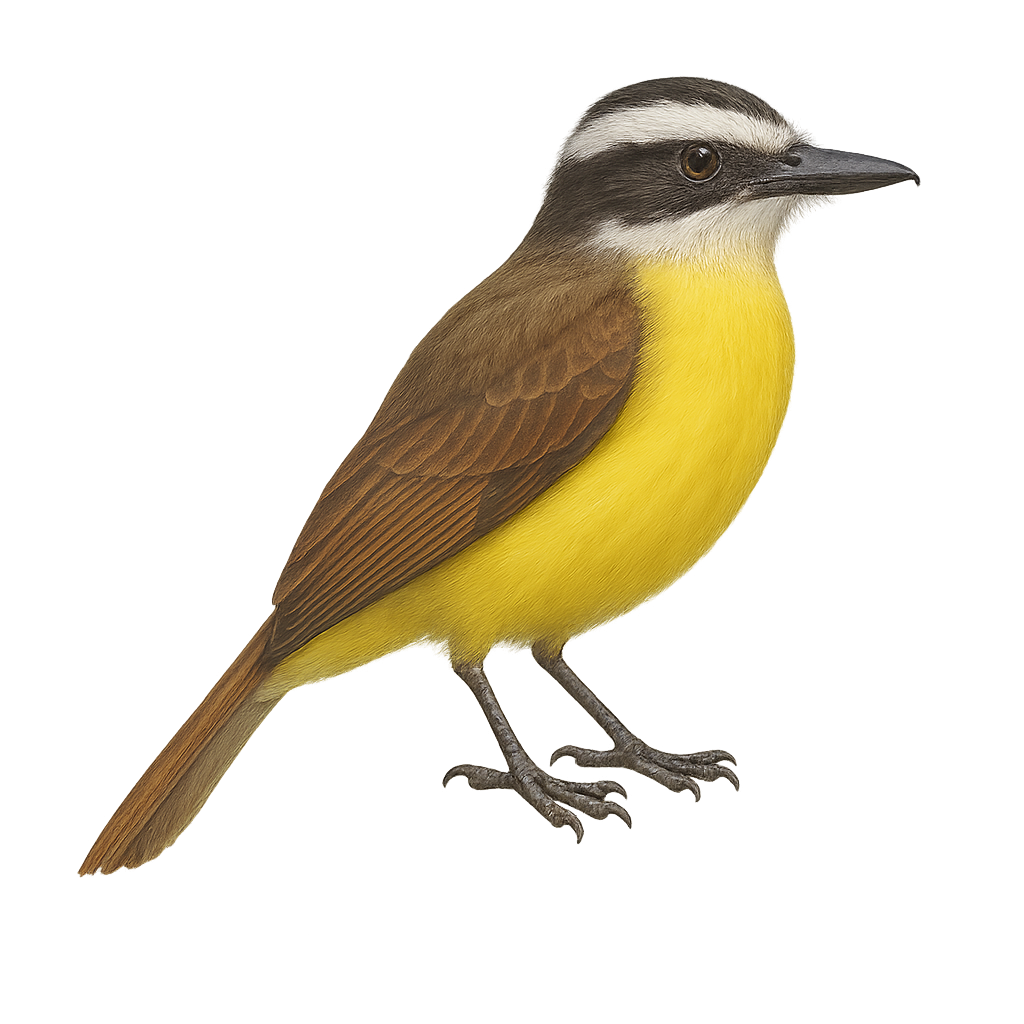Your wildlife photography guide.
Explore the great kiskadee in detail, study its behavior, prepare your shots.
Where to observe and photograph the great kiskadee in the wild
Learn where and when to spot the great kiskadee in the wild, how to identify the species based on distinctive features, and what natural environments it inhabits. The WildlifePhotographer app offers tailored photography tips that reflect the great kiskadee’s behavior, helping you capture better wildlife images. Explore the full species profile for key information including description, habitat, active periods, and approach techniques.
Great Kiskadee
Scientific name: Pitangus sulphuratus

IUCN Status: Least Concern
Family: TYRANNIDAE
Group: Birds
Sensitivity to human approach: Tolerant
Minimum approach distance: 5 m
Courtship display: October to November
Incubation: 16-18 jours
Hatchings: October to December
Habitat:
Light forests, open areas, gardens
Activity period :
Primarily active during the day, with peak activity in the morning and late afternoon.
Identification and description:
The Great Kiskadee is a medium-sized bird, easily recognizable by its bright yellow belly and head adorned with a white and black stripe. It has a sturdy black beak, suited to its varied diet that includes insects, fruits, and small vertebrates. This bird is often seen in open areas, gardens, and light forests, where it perches on exposed branches to monitor its territory. Its distinctive call, resembling its name, is often heard throughout its range, which extends from the southern United States to Argentina. The Great Kiskadee is a social bird, often seen in pairs or small groups, and is known for its boldness against predators.
Recommended lens:
400 mm – adjust based on distance, desired framing (portrait or habitat), and approach conditions.
Photography tips:
To photograph the Great Kiskadee, it is advisable to use a 400mm or longer telephoto lens to capture precise details without disturbing the bird. Look for areas where the bird is active, such as gardens or light forests, and be patient. Morning is often the best time to observe and photograph this bird, as it is more active and the light is soft. Try to capture its natural behavior, such as its distinctive call or its watchful posture.
The WildlifePhotographer App is coming soon!
Be the first to explore the best nature spots, track rutting seasons, log your observations, and observe more wildlife.
Already 1 430 wildlife lovers subscribed worldwide

